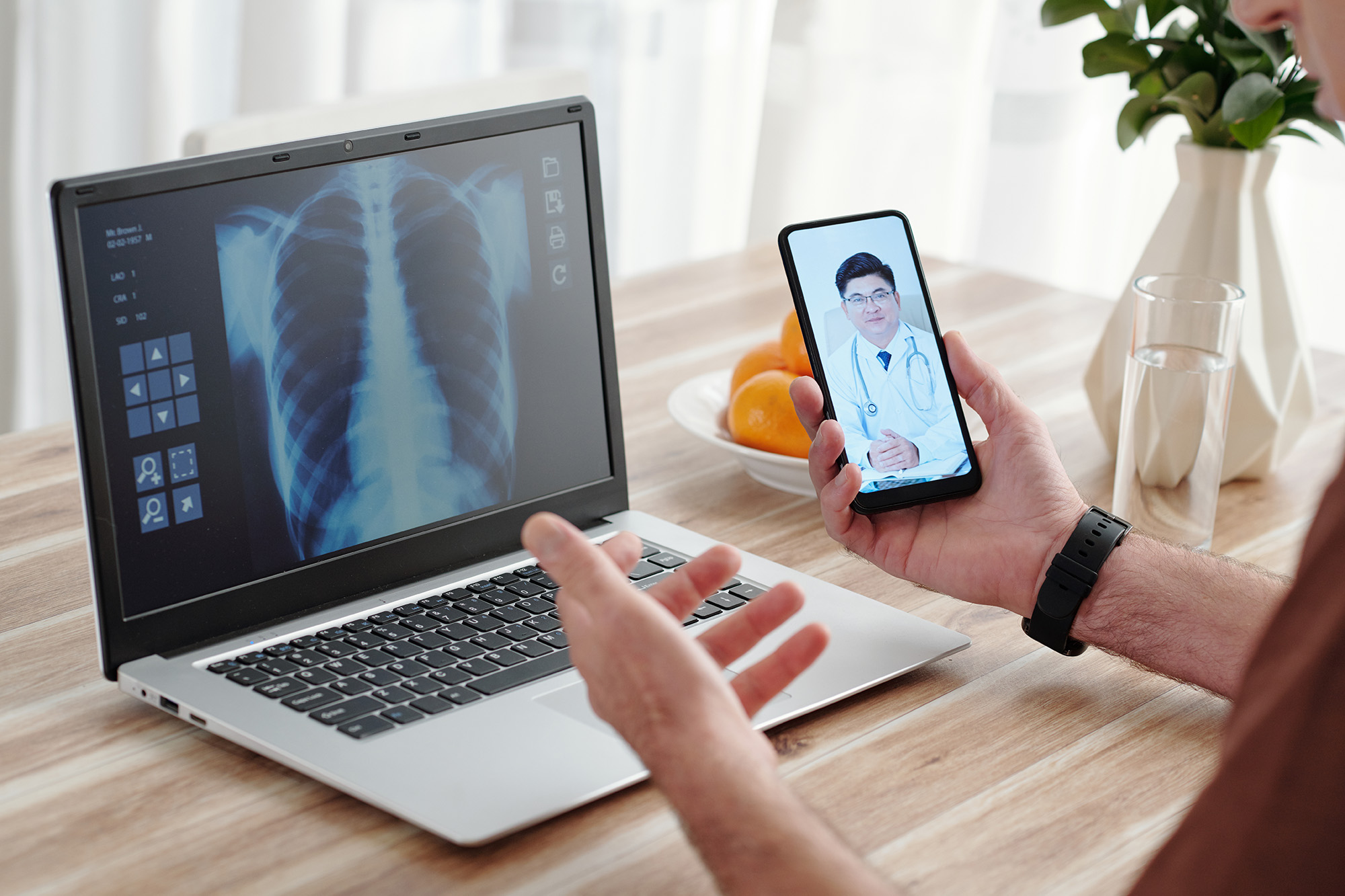When Technology Meets Healthcare

When Technology Meets Healthcare
August 28, 2023
The convergence of technology and healthcare has ushered in a new era of innovation and transformation, promising to reshape the landscape of medical practices, patient care, and overall health management.
With advancements in fields like artificial intelligence (AI), telemedicine, wearable devices, and data analytics, technology is not only enhancing the quality of healthcare but also making it more accessible and personalized than ever before.
This article delves into the various ways in which technology is revolutionizing the healthcare industry, providing benefits to both patients and medical professionals.
Telehealth: The Merge Between Technology and Health
Telehealth, also known as telemedicine, is a healthcare practice that involves the use of technology to provide remote medical services and consultations. It enables healthcare professionals to diagnose, treat, and monitor patients without the need for in-person visits.
This approach has gained significant prominence in recent years, especially with the advancements in technology and the increased need for remote healthcare services, and encompasses a wide range of services, including virtual appointments, remote monitoring, access to specialists and emergency consultations, prescription services, and the exchange of medical information through various digital channels.
Enhancing Lives with Telehealth
Telehealth offers a wide range of benefits that contribute to the transformation of healthcare delivery. These advantages extend to patients, healthcare providers, and the healthcare system as a whole. Here are some key benefits of telehealth:
- Increased Access to Healthcare: Telehealth improves access to healthcare services, particularly for individuals who live in rural or underserved areas, since patients can connect with healthcare providers regardless of their physical location.
- Convenience and Flexibility: Telehealth provides patients with the convenience of receiving medical care or having appointments from the comfort of their own homes. This is especially valuable for individuals with mobility issues, chronic illnesses, or limited transportation options.
- Reduced Wait Times: Traditional in-person appointments often involve waiting rooms and wait times. Telehealth appointments tend to be more punctual, reducing patient wait times and improving overall satisfaction.
- Enhanced Continuity of Care: Telehealth supports ongoing communication between patients and healthcare providers. Follow-up appointments, medication management, and treatment plan adjustments can be easily facilitated through virtual consultations, promoting better continuity of care.
- Remote Monitoring: Telehealth facilitates remote monitoring of patients’ health data, such as vital signs and chronic condition management. Healthcare providers can intervene early if any concerning trends are identified, leading to more timely interventions.
Despite its numerous benefits, it’s important to acknowledge that telehealth is not a one-size-fits-all solution. Certain medical situations still require in-person visits for examinations, procedures, and treatments. Additionally, addressing issues related to patient privacy, data security, regulatory compliance, and equitable access to technology remains crucial as telehealth continues to expand its reach.
Revolutionizing an Industry
The convergence of technology and healthcare is undoubtedly transforming the industry, improving patient care, and enhancing overall medical practices. We will now jump into some of the most ground-breaking applications of technology in health:
Telemedicine and Remote Monitoring
Telemedicine has emerged as a game-changer in healthcare, allowing patients to consult with medical professionals remotely. This technology has become particularly significant during the global pandemic, enabling healthcare providers to offer virtual appointments, diagnose illnesses, and provide prescriptions without patients needing to visit a medical facility physically.
Moreover, remote patient monitoring devices enable doctors to track vital signs and health data in real-time, empowering them to make informed decisions about patient care even from a distance.
AI-Powered Diagnostics
Artificial intelligence is making waves in healthcare by enhancing diagnostic capabilities. Machine learning algorithms can analyze vast amounts of medical data, such as images, scans, and patient histories, to aid in early disease detection.
AI-powered diagnostic tools can identify patterns and anomalies that may not be apparent to human eyes, enabling quicker and more accurate diagnoses. For instance, AI is being utilized in the interpretation of medical images like X-rays, MRIs, and CT scans, thereby improving radiologists’ efficiency and reducing the risk of errors.
Personalized Treatment Plans
Technology has enabled the shift from a one-size-fits-all approach to a more personalized model of healthcare. By analyzing individual patient data, including genetic information, medical history, and lifestyle factors, AI algorithms can suggest tailored treatment plans.
This approach can lead to more effective interventions, reduced adverse effects, and improved patient outcomes. Precision medicine, which aims to customize treatments based on an individual’s unique characteristics, is gaining momentum due to these technological advancements.
Wearable Health Devices
Wearable devices, such as smartwatches and fitness trackers, have become universal tools for monitoring health and wellness. These devices can track metrics like heart rate, sleep patterns, steps taken, and even detect irregularities in heart rhythms.
The data collected can offer valuable insights into a person’s overall health and help identify potential health issues early on. Furthermore, wearable technology encourages individuals to take a proactive role in managing their well-being through exercise and healthy habits.
Electronic Health Records (EHRs)
Electronic Health Records have transformed the way patient information is stored, accessed, and shared among medical professionals. EHR systems streamline the administrative aspects of healthcare, reducing paperwork and ensuring accurate record-keeping.
Interoperable EHR systems enable seamless communication between different healthcare providers, promoting better coordination of care and reducing the likelihood of medical errors due to incomplete information.
Robotics in Surgery
Robotic-assisted surgery has gained traction in recent years, allowing surgeons to perform complex procedures with enhanced precision and control. Robotic systems provide a higher degree of dexterity and stability compared to traditional techniques, leading to smaller incisions, reduced blood loss, and shorter recovery times for patients.
Surgeons can remotely control robotic arms equipped with surgical instruments, expanding their capabilities, and enabling them to reach challenging anatomical locations.
If you want to discover how the right IT partner can help develop the best technological solutions for the healthcare industry, talk to us!